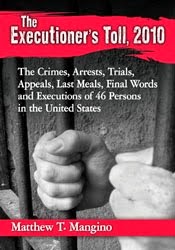Pennsylvania Law Weekly
June 14, 2011
The U.S. Supreme Court expanded the exigent circumstances exception to the Fourth Amendment ban against unreasonable searches and seizures. The court has long recognized exceptions to the warrantless entry of a home by the police.
First, the "emergency aid" exception provides that the police may enter a home without a warrant to render emergency assistance to an injured person in the house or to protect an occupant from imminent injury. Second, the police may enter a home without a warrant when they are in "hot pursuit" of a fleeing suspect. Finally, the police may enter a home without a warrant to prevent the "imminent destruction" of evidence.
In
Kentucky v. King , the Lexington Police Department was involved in an undercover drug investigation. After observing the drug transaction the police moved in to make an arrest. The suspect fled toward an apartment building with the police in pursuit. As the police entered the building they heard a door close. There were two apartment doors; from under one door emanated the smell of marijuana.
The police chose not to get a warrant, although at that time probable cause likely existed to get a warrant. Instead the police, "banged on the door as loud as possible" and announced, "police, police, police." At that point the police heard movement within the apartment that led them to believe that the occupants were destroying evidence of drug use. The police announced their intention to enter the apartment and "kicked down the door."
The Kentucky Supreme Court held that the exigent circumstances rule to protect evidence from imminent destruction does not apply in this case because the police should have foreseen that their conduct would prompt the occupant of the apartment to attempt to destroy evidence.
The U.S. Supreme Court disagreed with the Kentucky Supreme Court. Justice Samuel A. Alito Jr. wrote for an 8-1 majority that a warrantless entry into a private citizen's home to prevent the destruction of evidence is justified if the police "did not create the exigency by engaging or threatening to engage in conduct that violates the Fourth Amendment."
The rationale for the decision gets a little tricky. Essentially, the court is saying ignorance is not bliss especially when dealing with the U.S. Constitution. The court holds a private citizen to a high standard of constitutional literacy concerning when to exercise the protections guaranteed therein and when to constitutionally protect oneself by omission.
Alito wrote, "When the police knock on a door but the occupants choose not to respond or to speak, 'the investigation will have reached a conspicuously low point,' and the occupants will have the kind of warning that even the most elaborate security system cannot provide. And even if an occupant chooses to open the door and speak with the officers, the occupant need not allow the officers to enter the premises and may refuse to answer any questions at any time."
"Occupants who choose not to stand on their constitutional rights but instead elect to attempt to destroy evidence have only themselves to blame for the warrantless exigent-circumstances search that may ensue," wrote Alito. Apparently Alito is suggesting that an average citizen must have more than a cursory understanding of the rights afforded by the constitution in order to make competent decisions when interacting with the police. Of course, most will say that if you have nothing to hide answer the door. Sometimes there are things that a home owner may want to hide that are completely legal.
In this case there was illegal activity going on within the residence. But, what if there were a very married couple engaging in what very married couples do in the privacy of their home? Their neighbors across the hall like to smoke a little marijuana now and again. The police smell the marijuana and bang loudly on the couple's door. The couple scrambles to get their clothes on, use the toilet — noises similar to destroying evidence. Should that couple expect that the police will kick their door down as they attempt to get dressed?
Had the police obtained a warrant, the husband and wife would probably have been dressed and more than willing to dispel the idea that they had any evidence to destroy.
Justice Ruth Bader Ginsburg was the lone dissenter in
Kentucky v. King . She wrote, "The existence of a genuine emergency depends not only on the state of necessity at the time of the warrantless search; it depends, first and foremost, on actions taken by the police preceding the warrantless search." "Officers must seek a warrant based on probable cause when they believe in advance they will find contraband or evidence of a crime … Wasting a clear opportunity to obtain a warrant," therefore, "disentitles the officer from relying on subsequent exigent circumstances."
The
King decision is further exacerbated by the growing movement across the country to expand the "castle doctrine" and "stand your ground" legislation. The idea that police can barge into a citizen's home appears to conflict with the right of citizens to protect themselves within their home — even from the police if their entry is unlawful.
Protecting oneself from illegal entry by the police recently got a little more complicated —at least in Indiana. Indiana's Supreme Court recently decided
Barnes v. Indiana . In a 3-2 decision, the court ruled that "this court is faced for the first time with the question of whether Indiana should recognize the common-law right to reasonably resist unlawful entry by police officers. We conclude that public policy disfavors any such right." The decision has created a firestorm of controversy in Indiana.
The U.S. Supreme Court's decision in
King has the potential for creating dangerous encounters between the police and citizens. The decision seems to impute to citizens a thorough, yet unrealistic, grasp of complex constitutional issues mixed with clear state legislative action across the country expanding the rights of individuals to use deadly force to protect themselves and their families within the sanctity of their homes. This seems to create a lethal combination of ignorance and bravado.







